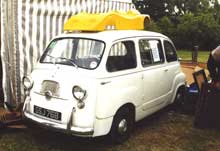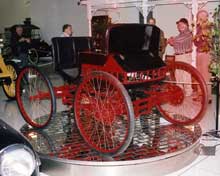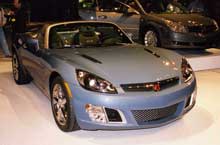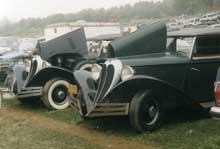I Never Bought a Fiat
I thought about it, though. I used to pass a Fiat dealer on my way to work, during the period when the 131 Mirafiori had come on the market. My Rover 2000 was a few years old, and I noted that the 131, later called "Brava," had twin overhead cams, to my Rover's single, and an extra speed in the gearbox. On the other hand, the Fiat's solid rear axle was antediluvian compared to my Rover's DeDion setup, and its drum rear brakes were retrograde, too.
Friends of ours had a 128 coupe, and told us they "loved the car, hated the service." It didn't take much for me to abandon my Fiat fascination. My family was not Fiat-deprived, however. My cousins lived in a two-Fiat family; Uncle Tom had a 600D coupe and Aunt Beezie drove an 1100 (the Millicento), albeit a wagon. They were, no doubt, lured into the showroom by the sporty 1200 Spyder in the window. The contemporaneous 600 Multipla which heads this page was an early minivan of sorts, ideal for all sorts of activities.
Fiat, actually an acronym for Fabbrica Italiana Automobili Torino (Italian automobile factory in Turin), is considered the Italian national car. The various 500 series in the 1920s and '30s were the sturdy transportation workhorses of the day. This 1927 509 saw taxi service in Sicily. After World War II, the Topolino (Little Mouse) was the darling of Europe, this 1951 Giardinetta Legno a mouse in a wooden house. The 600 also came as a Giardinetta, clad in steel. There were larger Fiats, like the six cylinder 2100, that never came to the New World, and even V8s, called "8V" (Otto Vu) to avoid possible trademark conflitto with Ford.
Sporting Fiats of the 1970s were the 124 Spyder and 850-successor X1/9. These were sold with Pininfarina and Bertone badges, respectively, when Fiat S.p.A. abandoned the US market after 1983. A co-worker with a 124 Spyder reported that the lower door hinges rusted off when the car was but four years old.
I don't regret not owning a Fiat. General Motors made a "strategic alliance" with Fiat in 2000, raising speculation on a return to USA. The General then bought its way out of the deal five years later. Fiats are still sold everywhere in the world but North America, but the Fiat dealership I used to pass is now a Honda store.




